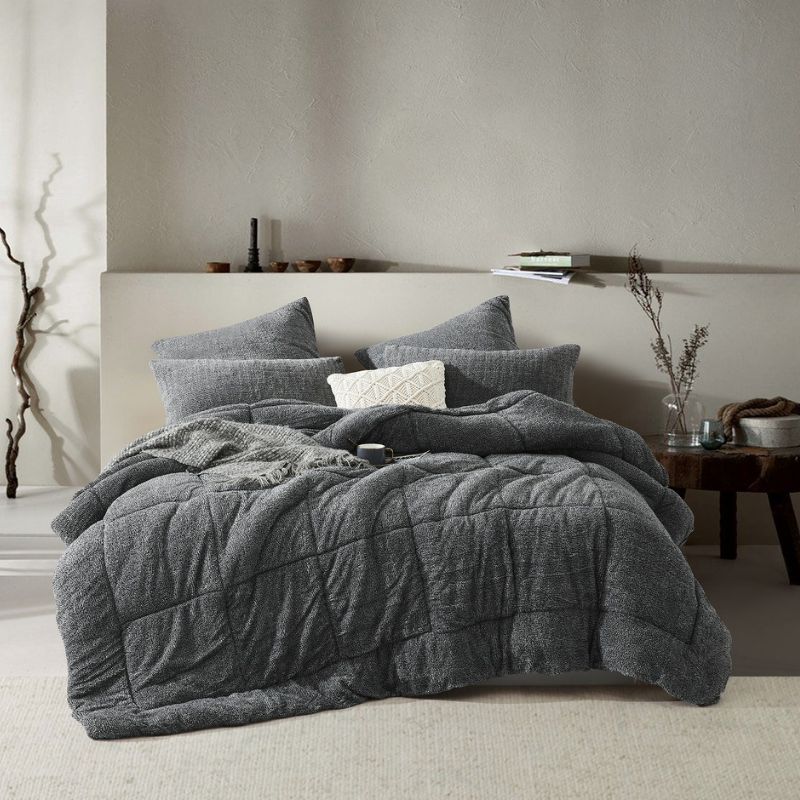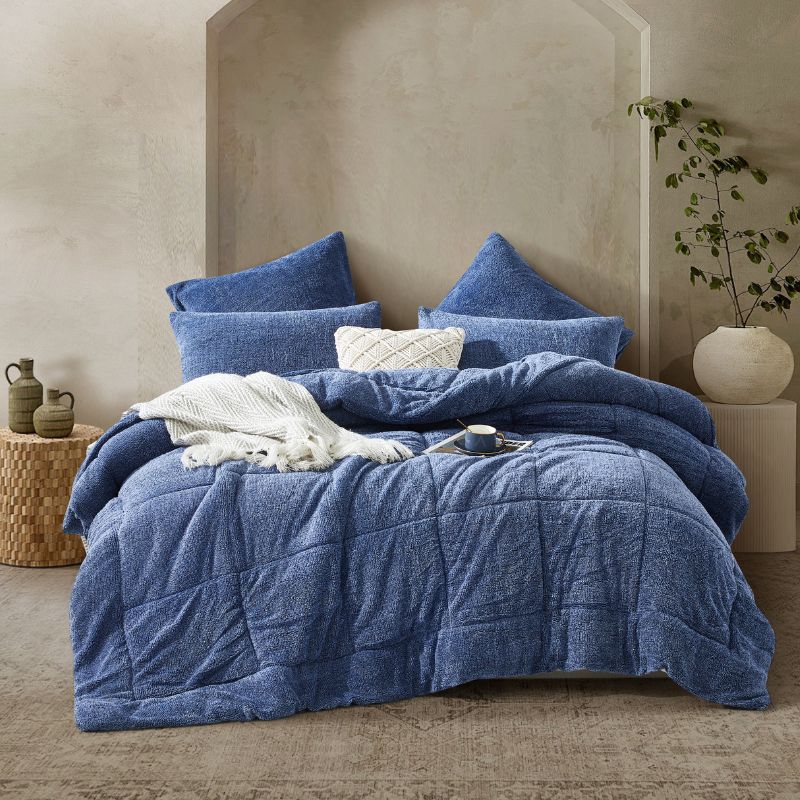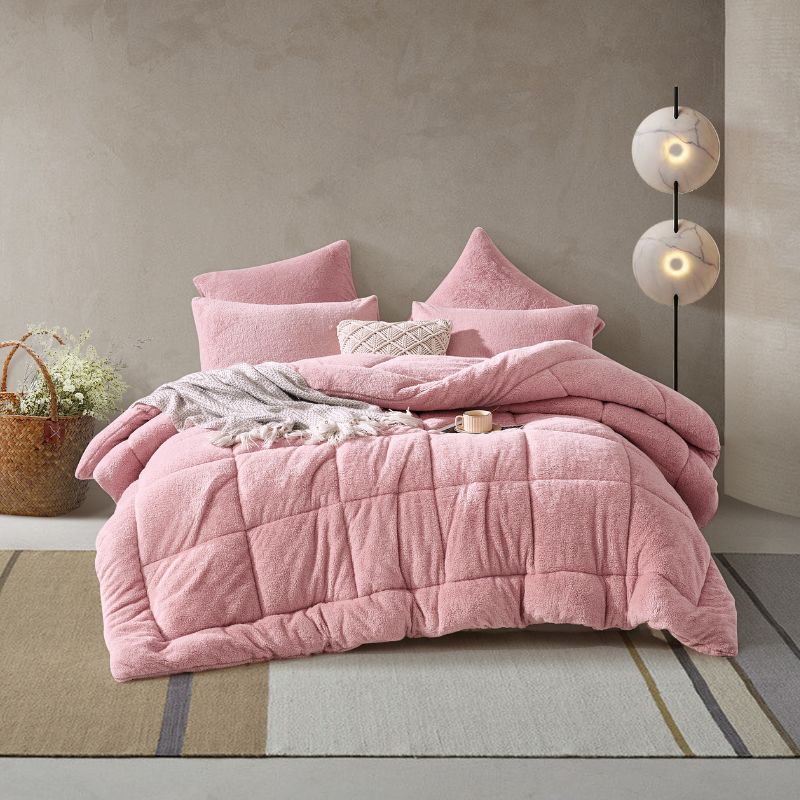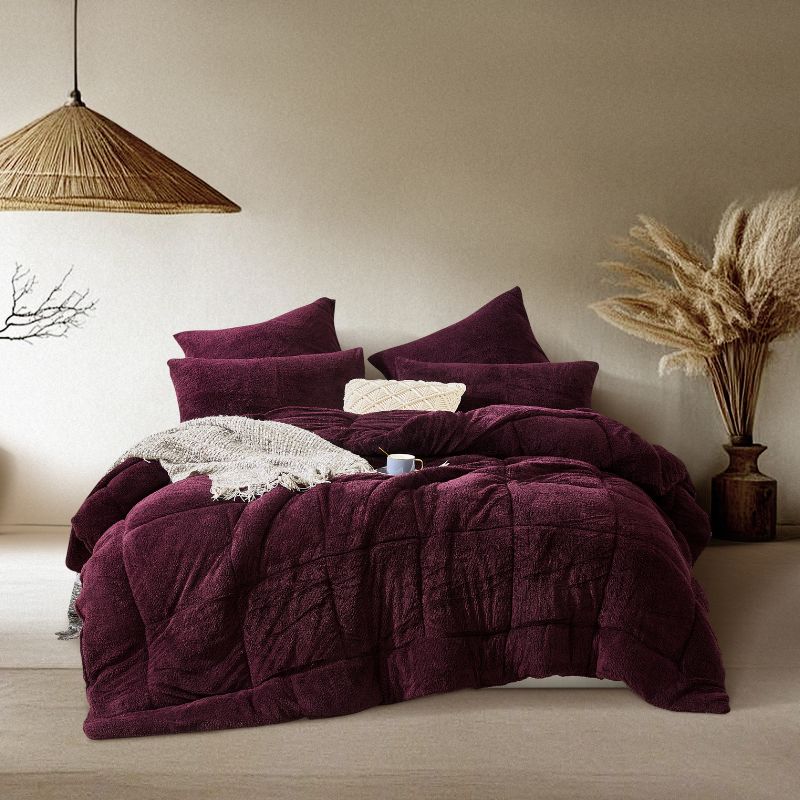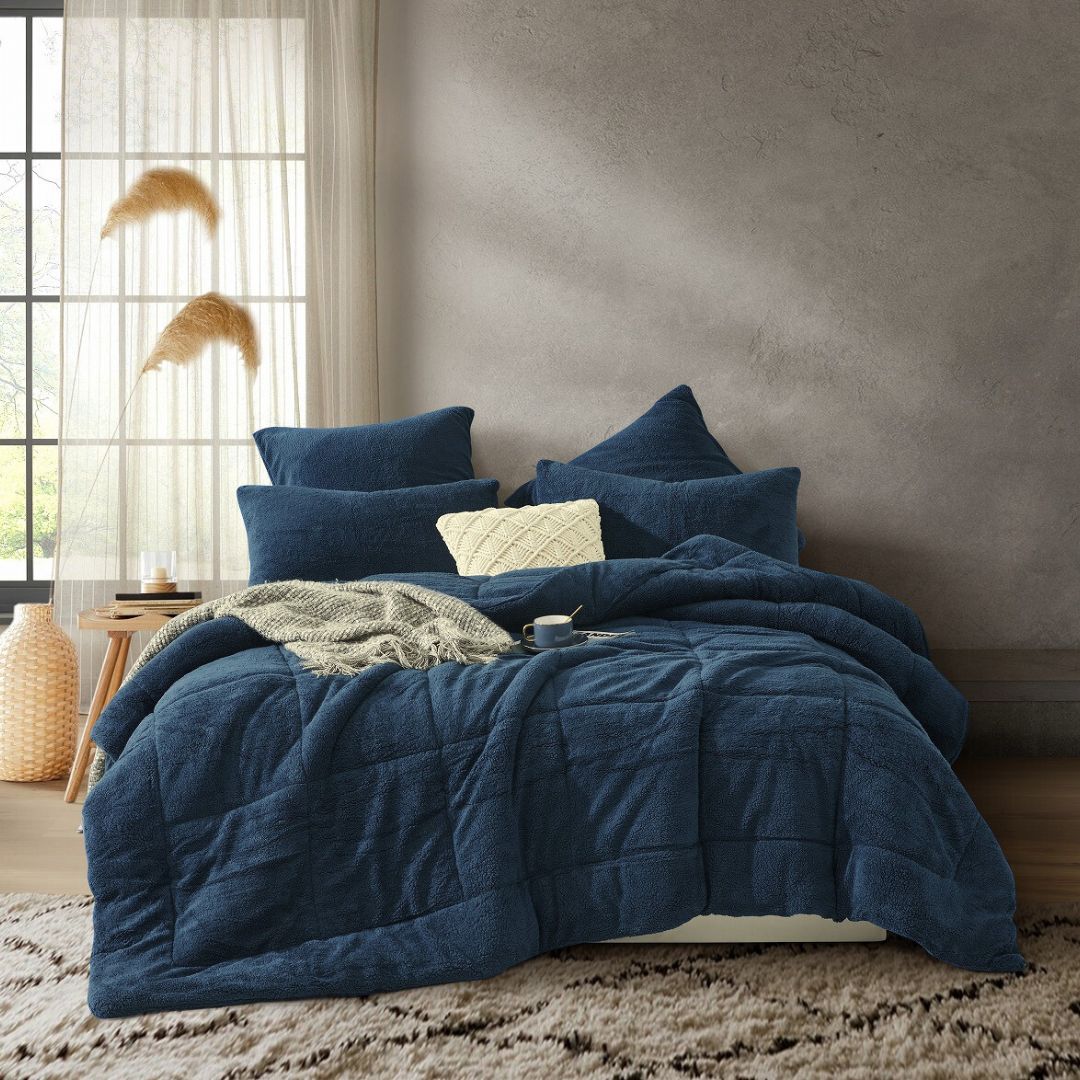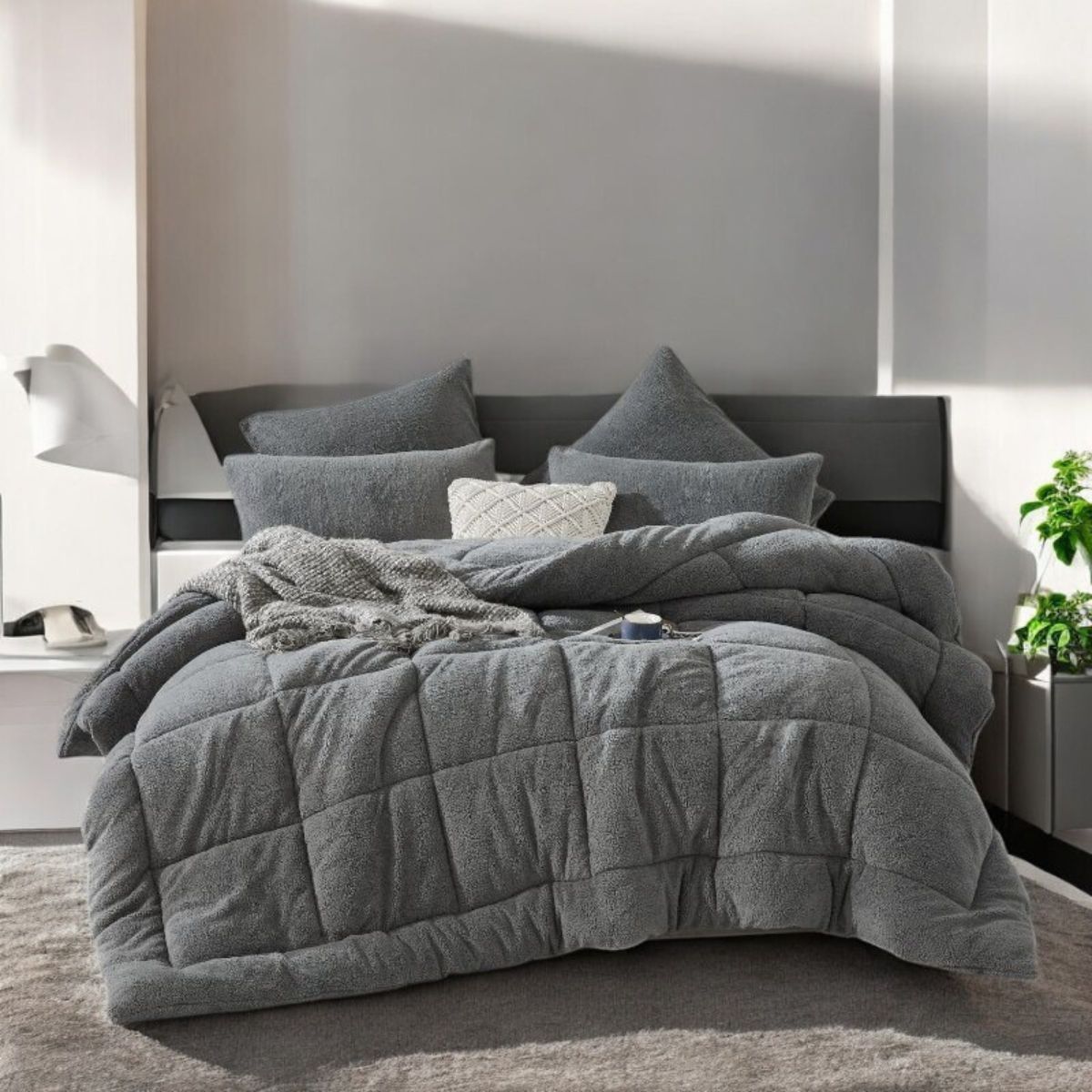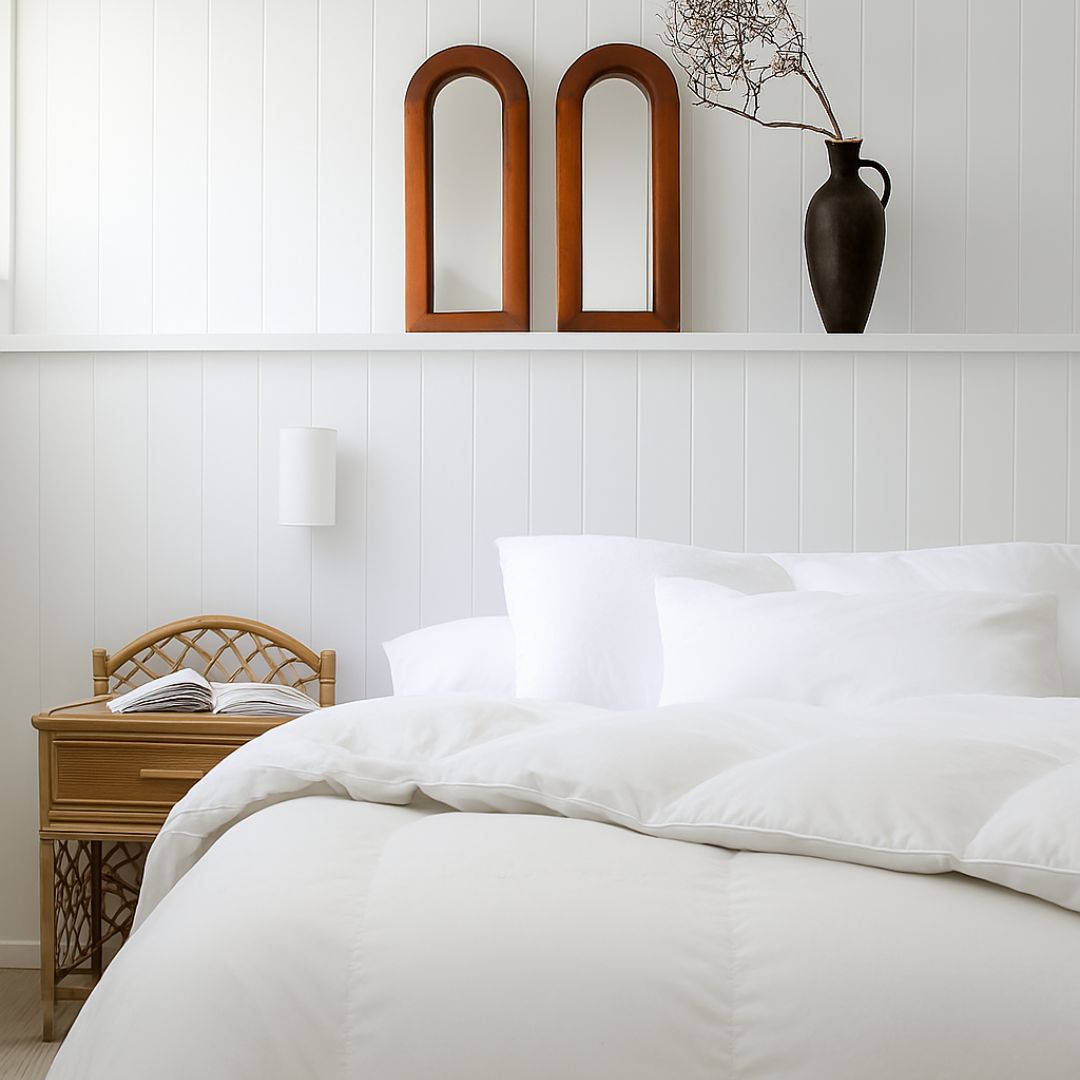Key Takeaways:
- Transform your bedroom into a warm, inviting haven with cosy bedding choices.
- Selecting the right materials like fleece, wool, and down enhances warmth and sleep quality.
- Utilise pre-sleep routines and bedroom adjustments to stay warm and cosy throughout winter nights.
The air is cold and biting as Australian winter sets in, turning the landscape into a cold sight that makes us want to stay inside our warm, comforting homes. In Australia, welcoming the cooler months means doing more than just turning off the aircondtioners and putting the fans away.
Throughout this guide we look at several methods in this article to make your bedroom a cosy, welcoming retreat in the winter. We will give you useful tips and insights, whether it's by updating your bedding with the cosiest fabrics designed for chilly evenings.
Come along with us as we walk you through how you be ready for winter as it arrives and answer the question. How can I optimise bedding choices and bedroom environment to ensure warmth and comfort during cold winter nights?
Establishing a Cosy Sleep Environment
Which bedding kind is ideal for the winter?
The correct bedding is the cornerstone of a cosy winter evening. For your bedding, choose fabrics like fleece or flannel, which are meant to hold heat longer than cotton or linen. An excellent wool or down quilt will provide an additional layer of warmth. Remember to choose your pillows carefully; down or memory foam pillows can improve your comfort level.
Choosing the Right Bedding Material
Selecting the appropriate bedding is crucial for your warmth and comfort as winter approaches. Each of the materials— bamboo,down, wool, flannel, and synthetic fibers—offers special advantages that improve warmth and the quality of sleep. To aid in your thoughtful selection, let's take a deeper look at some well-liked bedding selections.
- Flannel: A soft fabric that retains body heat for a comfortable sleep.
- Wool: Known for moisture-wicking and temperature regulation, ideal for a dry and warm sleep.
- Down: Light and insulating, perfect for trapping warm air and providing luxury.
- Synthetic Fibres: Hypoallergenic and easy to maintain, offering warmth similar to natural materials at a lower cost.
- Bamboo: Combines breathability with insulation, suitable for sensitive skin and environmental sustainability.
Regarding warmth retention and the quality of sleep, each of these materials has benefits of its own. Your decision should take into account your budget, personal preferences, probable allergies, and the average annual temperature in your area. You can greatly improve your sleeping environment and make sure you stay warm and comfy all through the night by choosing the right bedding material.
Selecting Cosy Winter Bedding
Choosing the ideal bedding for the winter may completely change your sleep quality and increase the comfort of cold evenings. Here's a comparison of duvets and comforters, as well as tips for selecting the best quilts, blankets, and sheets.
Quilts
For people who want bedding that is both aesthetically pleasing and practical, quilts are perfect. Seek for quilts that are packed with natural fibres, such as wool or down, as these materials offer superior insulation while still letting your skin breathe. Generally speaking, a thicker quilt will provide greater warmth, making it appropriate for the winter months.
Read More: Choosing the Warmest Quilt For Winter In Australia
Blankets
When it comes to blankets, wool and fleece are popular choices due to their high warmth-to-weight ratios. Wool blankets are especially good for retaining heat and regulating body temperature, making them perfect for winter. Fleece, on the other hand, is lighter and softer, providing a snug feel without the weight and aso being and affordable winter blanket option.
Comforter vs. Quilts
Comforters and quilts, doonas, and duvets are common options for bedding, however they have significantly different functions:
Typically, quilts are stuffed with wool, down, feathers, bamboo, or synthetic fibres. They are made to be used with a quilt cover that can be removed. By switching out the duvet cover or utilising quilts of varying thicknesses depending on the season, this arrangement not only makes cleaning duvets easier but also makes it simple to regulate the temperature.
Typically, comforters are quilted, lightweight, and have equally distributed stuffing that is frequently sewed in place. Because comforters frequently have a built-in pattern or colour, they may be used without a cover. Comforters have a tendency to be warmer, making them ideal for anyone looking for an easy-to-use sleeping option.
How to Make Your Bedroom Feel Comfortable
Having a cosy bedroom is crucial for enjoying cosy winter evenings. First, use weather stripping or draft stoppers to prevent any drafts around windows and doors. This will significantly improve the temperature of your space and save your heating expenses.
To further insulate the room and keep out chilly air, add soft carpets and heavy drapes. In order to create a cosy atmosphere, go for lamps with warm bulbs rather than harsh overhead lighting.
You may also try adding real or LED candles to your bedroom for a soft glow. When combined, these actions will assist keep the ideal temperature and create a cosy, welcoming hideaway.
Winter Sleep Tips
There's more to sleeping in the winter than merely hunkering behind covers. In order to make sure you stay warm and cosy all through the night, it's critical to set up your body and bedroom. The following useful pre-sleep practices and advice can help you get through the cold and get better quality sleep:
Pre-Bed Routines to Increase Warmth:
Warm Drinks: Before going to bed, have a warm, non-caffeinated beverage, such as warm milk or herbal tea. This may cause a minor increase in body temperature and make you feel sleepier.
Warm Baths: Having a warm bath will raise your body temperature considerably, which can facilitate falling asleep more quickly when you're in bed.
Heating Pads or Hot Water Bottles: To pre-warm the sheets before you go to bed, place a heating pad or a hot water bottle in your bed. This can avoid the shock of chilly bedding and be quite reassuring.
Use layered blankets and flannel sheets for your bedding, allowing them to be altered as needed during the night. Depending on your body temperature, layering makes it simple to add or remove blankets.
Keeping Your Sleeping Space Warm:
Warm Up Your Area: Make sure the insulation in your bedroom keeps drafts out. Cover windows and door draft stoppers with thick drapes.
Ideal Room Temperature: Maintain a pleasant temperature of between 18 and 22 degrees Celsius in your bedroom. Too much heat or cold in a space might interfere with your ability to sleep.
You may improve your warmth and comfort level at night by implementing these habits into your routine, which will help you sleep better in the chilly winter months.


